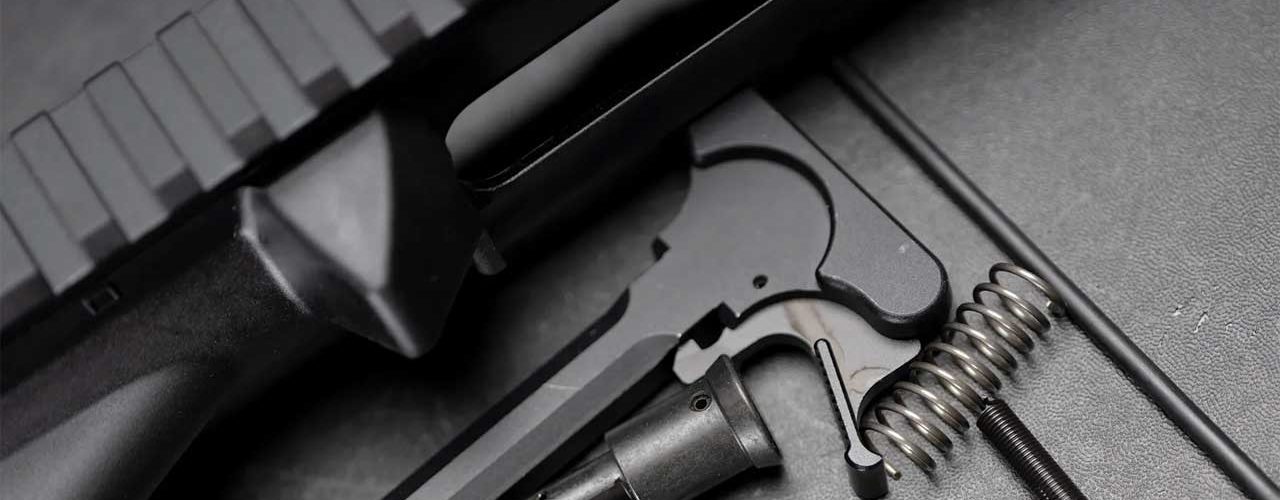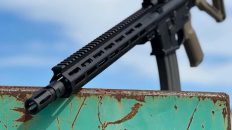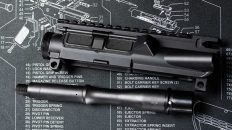The charging handle is a critical AR-15 component of any rifle enthusiast’s kit. Whether you’re a seasoned shooter or a beginner looking to understand the ins and outs of your firearm, this ultimate guide will take you through everything you need to know about this essential piece of equipment. From its basic functionality to different types and variations available in the market, we’ve got you covered.
In this comprehensive guide, we’ll dive into the history of the AR-15 charging handle, its importance in the shooting process, and how it contributes to the overall performance of your rifle. We’ll also explore the various designs and materials used in manufacturing charging handles, shedding light on the pros and cons of each. Plus, we’ll offer expert tips on maintenance and troubleshooting.
Whether you’re a tactical shooter, a competitive marksman, or a military professional, understanding the AR-15 charging handle inside out will give you a competitive edge when it matters the most. So, strap in, take aim, and embark on this enlightening journey into the heart of your firearm’s operation.
Function and importance of the charging handle
The AR-15 charging handle is a crucial component of the rifle’s operation, responsible for chambering the first round and cycling the action during subsequent shots. It plays a vital role in the overall performance and reliability of the firearm.
At its core, the charging handle is the mechanism that allows the shooter to manually operate the bolt carrier group, which in turn loads a new cartridge into the chamber and prepares the rifle for firing. By pulling the charging handle rearward, the shooter can unlock the bolt, extract a spent casing, and ready the rifle for the next shot. This manual operation is essential in the event of a malfunction or when the rifle needs to be reloaded without the use of the trigger.
Beyond its basic functionality, the charging handle also contributes to the shooter’s comfort and control during the shooting process. The design and placement of the charging handle can significantly impact the ergonomics of the rifle, allowing for a more natural and efficient operation. A well-designed charging handle can enhance the shooter’s ability to quickly and smoothly manipulate the action, which is crucial in tactical or competitive shooting scenarios where time and precision are of the utmost importance.
Different types of AR-15 charging handles
The AR-15 platform offers a wide variety of charging handle designs, each with its own unique features and benefits. The most common types include the standard mil-spec charging handle, the extended charging handle, the ambidextrous charging handle, and the oversized charging handle.
The standard mil-spec charging handle is the most basic and widely used option, featuring a simple, straightforward design that is compatible with most AR-15 rifles. This type of charging handle is often the default choice for those seeking a reliable and affordable solution.
In contrast, the extended charging handle is designed to provide the shooter with a larger surface area for gripping and manipulating the action. This can be particularly useful for those with larger hands or for situations where the shooter needs to access the charging handle more easily, such as when wearing gloves or operating the rifle from a prone position.
The ambidextrous charging handle takes the concept of the extended handle one step further, offering a design that can be operated from either side of the rifle. This feature is highly valued by left-handed shooters or those who need to access the charging handle from multiple positions during dynamic shooting scenarios.
Pros and cons of various charging handle designs
Each type of AR-15 charging handle design comes with its own set of advantages and disadvantages, and it’s important for shooters to carefully consider their specific needs and preferences when making a selection.
The standard mil-spec charging handle is known for its simplicity, durability, and widespread compatibility. It is often the most affordable option and is well-suited for general-purpose use. However, its relatively small size and lack of additional features may not be ideal for those seeking enhanced ergonomics or ambidextrous operation.
The extended charging handle, on the other hand, provides a larger surface area for improved grip and control, making it a popular choice among shooters who value ease of use and quick manipulation of the action. However, the extended design can also increase the overall footprint of the rifle, potentially interfering with certain AR-15 accessories or attachments.
Ambidextrous charging handles offer the benefits of an extended design while also catering to left-handed shooters or those who need to access the charging handle from multiple positions. This versatility can be a significant advantage in tactical or competition scenarios, but the added complexity and cost may be a drawback for some users.
Factors to consider when choosing an AR-15 charging handle
When selecting an AR-15 charging handle, there are several key factors to consider to ensure that you choose the right option for your specific needs and preferences.
Firstly, it’s important to assess the size and shape of the charging handle, as this will directly impact the shooter’s ability to grip and manipulate the action. Those with larger hands or who need to operate the rifle while wearing gloves may prefer an extended or oversized charging handle, while those with smaller hands or who prioritize a more compact profile may be better suited to a standard mil-spec design.
The material used in the construction of the charging handle is another important consideration. Charging handles are typically made from aluminum, steel, or polymer, each with its own unique strengths and weaknesses. An aluminum charging handle offer a lightweight and corrosion-resistant option, while steel provides enhanced durability and strength. Polymer charging handles can be a cost-effective solution, but may not offer the same level of robustness as their metal counterparts.
Additionally, the presence of features such as ambidextrous controls, textured surfaces, or integrated levers can significantly impact the overall functionality and ergonomics of the charging handle. Shooters should carefully evaluate their needs and preferences to determine which features are most important to them.
Installation and maintenance of the charging handle
Proper installation and maintenance of the AR-15 charging handle are crucial for ensuring the reliable and safe operation of the rifle.
When installing a new charging handle, it’s essential to follow the manufacturer’s instructions carefully and ensure that the component is securely seated within the upper receiver. This may involve aligning the charging handle with the appropriate grooves or channels and applying a specific amount of pressure to ensure a tight fit. Failure to properly install the charging handle can lead to malfunctions or even damage to the firearm.
Regular maintenance of the charging handle is also crucial to maintain its smooth and reliable operation. This includes regularly inspecting the component for signs of wear or damage, such as cracks, chips, or excessive play. Cleaning the charging handle and the surrounding areas with a suitable solvent and lubricant can help to prevent the buildup of dirt, debris, and carbon fouling, which can impede the charging handle’s movement and contribute to malfunctions.
It’s important to note that the charging handle is a critical safety component, as it plays a role in the proper functioning of the rifle’s action. Any issues with the charging handle should be addressed promptly and by a qualified gunsmith or the manufacturer to ensure the safe and reliable operation of the firearm.
Troubleshooting common issues with the charging handle
While the AR-15 charging handle is generally a reliable component, it can occasionally encounter issues that may require troubleshooting and repair. Understanding the common problems and their potential causes can help shooters quickly identify and resolve any issues that may arise.
One of the most common problems with the charging handle is binding or stiffness in the action, which can make it difficult to operate the rifle smoothly. This issue can be caused by a variety of factors, including dirt, debris, or carbon buildup within upper receivers, improper lubrication, or a worn or damaged charging handle. In such cases, a thorough cleaning and re-lubrication of the affected areas may be necessary to restore smooth operation.
Another potential issue is the charging handle becoming loose or detached from the rifle. This can be the result of improper installation, worn or damaged components, or excessive use over time. In these instances, the charging handle may need to be re-installed or replaced to ensure a secure and reliable connection.
In some cases, the charging handle may experience breakage or structural failure, which can render the rifle inoperable. This type of issue is often the result of excessive force or impact, poor manufacturing, or the use of low-quality or incompatible components. Addressing this problem typically requires the replacement of the damaged charging handle with a new, high-quality component.
Upgrades and accessories for the charging handle
The AR-15 charging handle is a popular area for customization and upgrades, with a wide range of aftermarket options available to enhance the functionality and performance of the rifle.
One of the most common upgrades is the installation of an extended or ambidextrous charging handle, which can provide improved ergonomics and easier access to the action. These types of charging handles are particularly useful for shooters who need to manipulate the rifle quickly or who have specific needs, such as left-handed operation.
Another popular upgrade is the addition of a charging handle latch, which can help to prevent the charging handle from inadvertently being pulled back during operation. This can be especially beneficial in dynamic shooting scenarios or when the rifle is subjected to harsh environmental conditions.
Shooters may also choose to upgrade the material or finish of their charging handle, opting for high-quality aluminum, steel, or even titanium components that offer enhanced durability and corrosion resistance. These upgrades can not only improve the overall performance of the rifle but also contribute to its aesthetic appeal.
Related: Read our article, Protecting Your Investment: Understanding and Preventing Firearm Corrosion, for more on firearm corrosion.
Safety considerations when using the charging handle
The AR-15 charging handle is a critical safety component, and it’s essential for shooters to exercise caution and follow proper safety protocols when handling and operating this essential piece of equipment.
One of the primary safety considerations when using the charging handle is to ensure that the firearm is pointed in a safe direction at all times. Inadvertently pulling the charging handle back while the rifle is pointed towards an unintended target can lead to a potentially dangerous situation. Shooters should always maintain muzzle awareness and keep the firearm pointed downrange or in a safe direction.
It’s also important to be mindful of the potential for the charging handle to cause injury to the shooter or bystanders. The sharp edges and rapid movement of the charging handle can pose a risk of cuts or abrasions, especially if the shooter’s hand or fingers are not properly positioned. Proper grip technique and situational awareness are essential to mitigate these risks.
Finally, shooters should always engage the safety and ensure that the rifle is unloaded before manipulating the charging handle, even if they believe the firearm to be empty. This helps to prevent accidental discharge and ensures the safe handling of the firearm.
Conclusion and final thoughts
The AR-15 charging handle is a critical component of the rifle’s operation, playing a vital role in the chambering of ammunition, the cycling of the action, and the overall performance and reliability of the firearm. Understanding the function, design, and maintenance of the charging handle is essential for any shooter who wants to get the most out of their AR-15 platform.
Whether you’re a seasoned marksman, a tactical operator, or a recreational shooter, taking the time to explore the various types of charging handles and their unique features can help you make an informed decision that aligns with your specific needs and preferences. From the standard mil-spec design to the more advanced ambidextrous and extended options, there is a charging handle solution to suit every shooter.
By properly installing, maintaining, and troubleshooting the charging handle, you can ensure the reliable and safe operation of your AR-15, while also taking advantage of the many upgrades and accessories available to enhance its performance. Remember, the charging handle is a critical safety component, so always exercise caution and follow best practices when handling and manipulating this essential piece of your rifle.
With this comprehensive guide at your fingertips, you’re now equipped with the knowledge and understanding to make informed decisions about the AR-15 charging handle and take your shooting skills to the next level. So, get out there, put your newfound expertise to the test, and enjoy the unparalleled performance and versatility that the AR-15 platform has to offer.





Add comment